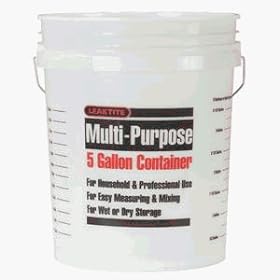Hi All,
I'm new to the forum and to home brewing, but so far I'm having a blast with it. I got a deluxe kit from my local home brew supply shop in Houston, TX and was off and running with my very first brew - my favorite - an IPA!
So, I've made it past the primary fermentation and it's sitting in a secondary now (I know, I've done a TON of reading here on skipping this process and may do that with my next brew... ) so this weekend I'm planning to bottle and have a question. I don't currently own a bottling bucket (with spigot). So my question is twofold.
) so this weekend I'm planning to bottle and have a question. I don't currently own a bottling bucket (with spigot). So my question is twofold.
1. Do I really HAVE to have a bottling bucket, or can i transfer it back to my primary and use my auto-siphon/tubing attached to my racking/bottling wand and just leave that in the bucket? Will the siphoning action be maintained between fillings, or will I have to 'restart' the siphon each time. If so, that sounds like a pain and I'll just get the bottling bucket with spigot. I'm ok with purchasing one, but I'm also trying to minimize expenses whenever I can.
2. I added another 1/2 oz of flavoring hops to my secondary per my brew instructions. When I transfer this to my primary or newly purchased bottling bucket, how can I best 'filter' out all the hops and other stuff in the secondary? I see a lot of yeast on the bottom of the secondary as well as on the ridges of the plastic carboy, and I want to minimize the transfer of this gunk as much as I can.
Any advice would be great. I look forward to hanging out here in the forums and learning a ton from all you home brew veterans out there.
Thanks!
Tim
I'm new to the forum and to home brewing, but so far I'm having a blast with it. I got a deluxe kit from my local home brew supply shop in Houston, TX and was off and running with my very first brew - my favorite - an IPA!
So, I've made it past the primary fermentation and it's sitting in a secondary now (I know, I've done a TON of reading here on skipping this process and may do that with my next brew...
1. Do I really HAVE to have a bottling bucket, or can i transfer it back to my primary and use my auto-siphon/tubing attached to my racking/bottling wand and just leave that in the bucket? Will the siphoning action be maintained between fillings, or will I have to 'restart' the siphon each time. If so, that sounds like a pain and I'll just get the bottling bucket with spigot. I'm ok with purchasing one, but I'm also trying to minimize expenses whenever I can.
2. I added another 1/2 oz of flavoring hops to my secondary per my brew instructions. When I transfer this to my primary or newly purchased bottling bucket, how can I best 'filter' out all the hops and other stuff in the secondary? I see a lot of yeast on the bottom of the secondary as well as on the ridges of the plastic carboy, and I want to minimize the transfer of this gunk as much as I can.
Any advice would be great. I look forward to hanging out here in the forums and learning a ton from all you home brew veterans out there.
Thanks!
Tim






